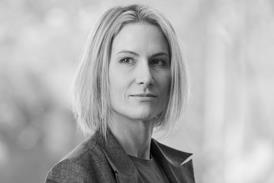Chris Herring reports from the 2012 International Passivhaus conference in Hanover
The 2012 International Passivhaus conference in Hanover was attended by over 1000 delegates from around the world. The tone was set by Ernst Von Weizsacker, author of a book on resource efficiency, Factor Five, and a leading international thinker and activist on climate change. He argued that for environmental solutions to really take off, we must find solutions which make them profitable. At the moment, state intervention in the renewables sector is making these profitable and skewing the market.
A major theme this year was the development of six different climatic zones - ranging from hot and dry zones, such as Saudi Arabia, to cool and temperate zones, such as the UK and Germany – and the measures needed for each zone to meet Passivhaus. The conclusion is that while there are particular challenges in the more extreme climate zones – the arctic, or some equatorial regions – Passivhaus is an optimal solution in many climate zones of the world, and perhaps even more significantly, for all areas of significant human population. The Passivhaus Institute will be working on specific guidance for each of the zones.
The UK was well represented with some excellent contributions from, among others, Justin Bere of bere:architects on the Mayville Community Centre retrofit, Jonathan Hines of Architype on the two Wolverhampton schools, Andy Simmonds of Simmonds Mills Architects on the first UK EnerPHit certification and Passivhaus energy consultant Alan Clarke on the particular requirements of school kitchens. Bjorn Kierulf of Createrra in Slovakia presented details of a low cost approach to Passivhaus construction using straw bale panels and clay plasters. Again and again, the message was that Passivhaus works and avoids the “performance gap” while cost-effectively delivering low energy buildings, whatever the construction method.
Of course, as well as considering big-picture issues, I also did what I always do at these conferences, and headed for the manufacturer’s exhibition. Having been part of the Denby Dale Passivhaus team, which pioneered the use of cavity wall construction to Passivhaus standard, I was interested to see a Danish brick manufacturer demonstrating a novel way of building cavity wall to Passivhaus standard. I was also intrigued by the 1500 Euro Passivhaus catflap, even if I doubt that many of my own company’s customers would be over enthusiastic at the price level! At the International Passivhaus Association (IPHA) stand I was keen to see the latest updates on the forthcoming Passivhaus Tradesperson course, which will hopefully be launched later this year in the UK.
Most interesting for me in terms of product development was a workshop on new approaches to glazing, which looked at an emerging glazing technology using very large sealed cavities combined with inert gas fill and multiple thin sheet technology. Ultimately glazing “U values” of around 0.1 W/m2K may be achievable. How long this will take to come to market at cost-effective prices, or even whether it ever will, I don’t know, but I have no doubt that innovations in glazing and window technologies will be significant in the development of Passivhaus buildings in the future.
My final job, after the conference, was to represent the UK at a meeting of organisations affiliated to the International Passivhaus Association. For Passivhaus to be able to offer solutions for energy efficiency right around the globe, we need a well co-ordinated effort. IPHA is an initiative from the Passivhaus Institut to try to bring together and co-ordinate the movement, without being prescriptive about how each country develops. It was particularly heartening to learn that, after Germany, the UK now has, through the Passivhaus Trust, the largest number of members of IPHA of any country or region in the world!
Three years ago, Professor Feist said to me that maybe although the UK had been very slow to begin to adopt Passivhaus, once we started we would really take off. With the first UK certified building in 2009 and now the number of UK Passivhaus buildings well into the hundreds, he appears to have been right. The challenge now is to increase recognition in the UK that Passivhaus offers an effective approach to delivering reliably low energy, comfortable buildings cost effectively.
Chris Herring is chair of the Passivhaus Trust and director of Green Building Store


























No comments yet